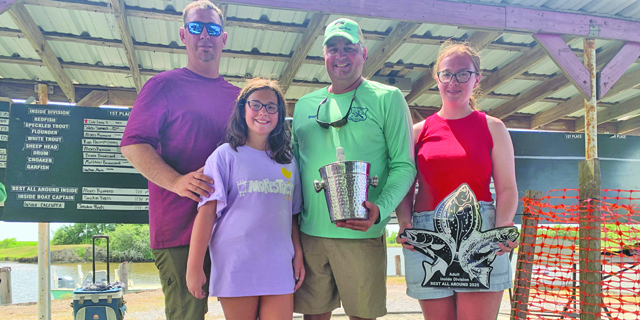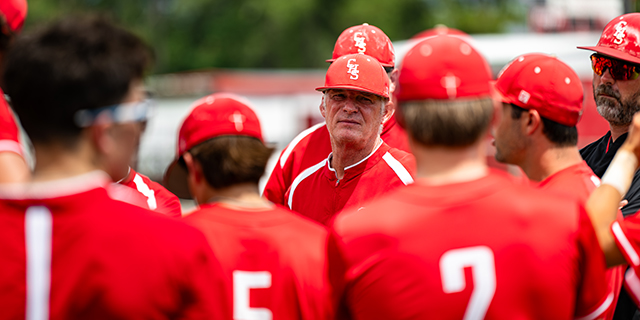Acadiana card players are really exercising their brains with this tournament game.
Published 8:00 am Monday, May 24, 2021

- DSC_8037.jpg
Add another pastime to the list of those that have resumed since COVID began over a year ago: duplicate bridge. Also called tournament bridge, duplicate bridge is a sport for your brain that requires full concentration, keeping mental notes on the plays, logic, basic math skills, quick thinking, patience and partnership skills. But, that’s all part of the allure for those who love it – like Bonnie Angers, a member of the Acadiana Duplicate Bridge Club, who hails from a card-playing family.
“Before COVID I was playing six times a week — once a day, except for Sunday,” says Angers, who began playing duplicate bridge in 1989 when the Acadiana club was established. “I never missed a game unless it was because of vacation or a surgery.”
Trending
“I played party bridge or contract bridge, but never duplicate bridge, until I moved to Lafayette. When I joined I was the worst player in the club,” she recalls. “There wasn’t a bridge teacher, so after I learned I began teaching beginner’s bridge.” She has taught basic bridge for 28 years, four at UL Lafayette.
Rules of the Game — and the Club
This popular trick-taking game is designed to put players of all skill levels on the same playing field, no matter whether the player holds good or bad cards. Four players in two competing teams are each dealt 13 cards from a regular 52-card deck. The cards are played, and then the four hands are passed intact, with card holders, to other tables (usually four to eight tables). The game is over when every team has played all the deals. The object of the game is to bid and play the hands better than all the other teams who have played the same cards. Players can rely on their partners to help them, but each person is playing for an individual win. Final scores are calculated by comparing each pair’s result with others who played the same hand.
One of the most important components of bridge is the bidding, which involves players communicating with each other in coded language in order to avoid revealing their hands to opponents. Players are allowed to use a combination of only fifteen words to describe their hands to partners.
There is no place for sore losers in the clubhouse. Duplicate bridge has its own etiquette guidelines, which are pretty much the opposite of what goes on playing bourré at the camp. There’s no snapping of cards on the table, foul language, demeaning body language, pointing out mistakes or criticizing a partner or opponent at the table. Players are encouraged to complement each other for good plays. “We’re trying to play professionally,” explains Angers who is director of the bridge club.
So what is it about duplicate bridge that gets players hooked? Winning. “You want to get those points,” says Angers, referring to the point system to advance in rankings. There are a required number of points for each of 14 levels, from rookie (0-5 points) to grand life master (10,000 plus points and a national title.) The way to get those points is by playing a lot and winning in club, particularly tournament games. Angers reached her 500 points to be a bronze life master in 1996 and is very close to making the 2,500 mark.
Trending
Some play duplicate bridge for more immediate results. Research has shown that every time you play, you use and improve your skills in communication, logic, math, memory, visualization and socialization. What’s more, a study in 2000 at the University of California, Berkeley found strong evidence that an area in the brain used in playing bridge also stimulates the immune system.
Boosted immune system! Good news for members of the Acadiana Duplicate Bridge Club, who resumed playing the first week of April at the clubhouse on West Congress Street in Lafayette. Now that the club has opened up again, the group is playing three days a week at 12:30.
The Players
If you’re envisioning silver-haired ladies, tea sandwiches and country clubs, think again. This game has a following that includes Bill Gates, Martina Navratilova, Warren Buffet and frontman for the English rock band Radiohead Thom Yorke, to name a few.
It’s a diverse group that plays at the Acadiana Duplicate Bridge Club. Of the 85 or so members, some have only a few month’s experience under their belts, while others have been playing for several decades. This intriguing game has attracted doctors, lawyers, judges, artists and engineers. Most, like Angers, are retired professionals who have the time to play for a few hours in the evenings. While many are women, there are a growing number of men – some who joined just last month. Ages range from 55 plus, but the club is always looking to recruit younger members.
“A lot of people assume we’re so serious,” says Angers “but we have such a good time.” “There are always parties and dinners. I host dinner about four times a year at my home. The club puts on parties for July the Fourth, Christmas, Thanksgiving and Halloween. I had no family here for a long time and the bridge club became my family, before I met my husband,” says Angers. Like five other couples she knows, she met her husband at the bridge club.
Evidently playing your cards right means you just have to play duplicate bridge to find new lifelong friends and a sharper mind – and maybe even a husband!
For information on the next beginner’s class, email Bonnie Angers at BonnieAngers50@gmail.com.





